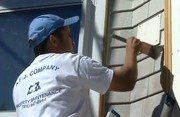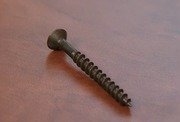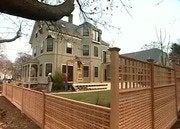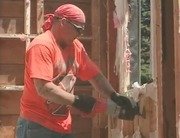Installing Standing-Seam Copper Roofing
Bob Fulmer (from Harraseeket Restoration, Inc.) joins Bob on the roof of the breezeway to install a double-lock standing seam copper roof.
Clip Summary
Bob Fulmer (from Harraseeket Restoration, Inc.) joins Bob on the roof of the breezeway to install a double-lock standing seam copper roof. Before installing the copper, a plywood deck is applied, followed by a layer of bituthene for moisture resistance, then a resin paper slip-sheet.The resin paper helps absorb the condensation generated on the back side of the copper panels by temperature changes. Additionally, it insulates the copper from touching asphalt-based underlayment, or bituthene, on which standing water creates a diluted form of sulphuric acid, which will degrade the copper.
The copper panels are brake-formed at the shop and brought on site ready to install. The panels are joined in a double-lock standing seam in a two-step process. First, the male edge is locked over the top of the female seam. Then, a second seamer completes the second lock, producing a one-inch high profile.
This 16-ounce standing seam copper roof should have a 75-year life expectancy, but proper application is critical. Lack of provisions for thermal expansion, such as permanently attaching the copper to the roof, will create stress in the panel and eventually cause material failure. Also fasteners should be from the copper family or electrolysis will set up.





